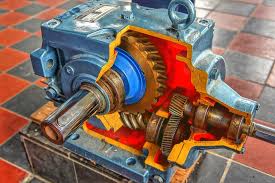Mobile:+86-311-808-126-83
Email:info@ydcastings.com
English
Premier Iron Foundry Solutions | High-Quality Castings & Fabrication Services
The Evolution of Iron Foundries A Historical Perspective
Iron foundries have played a crucial role in the development of industrial societies across the globe. These facilities, specialized in casting iron into various shapes and products, are essential for manufacturing machinery, construction materials, and countless other everyday items. Understanding the evolution of iron foundries provides insight into their significance and the technological advancements that have shaped modern industry.
The origins of iron foundries can be traced back to ancient civilizations, where the art of metalworking was practiced by skilled artisans. Early foundries utilized basic techniques, often relying on charcoal as fuel for smelting iron ore. As demand for iron products grew during the Middle Ages, particularly in Europe, more sophisticated methods emerged. The introduction of water-powered hammers and bellows significantly improved the efficiency of iron production, leading to the establishment of larger foundries.
The Industrial Revolution in the 18th and 19th centuries marked a turning point for iron foundries. With innovations such as the steam engine, foundries became mechanized, allowing for mass production of iron goods. This era saw the rise of large-scale ironworks, where cast iron was employed in construction, transportation, and various industries. The development of new techniques, including the Bessemer process for purifying iron, further revolutionized production methods, making high-quality steel more accessible.
iron foundry

Throughout the 20th century, iron foundries continued to evolve. Automation and advancements in metallurgy enhanced production capabilities and product quality. Modern foundries utilize advanced technologies such as computer numerical control (CNC) machining, 3D printing, and sophisticated casting techniques. These innovations have led to the production of intricate designs and customized components, meeting the demands of an increasingly diverse marketplace.
Moreover, the iron foundry industry faces modern challenges such as sustainability and environmental impact. As global awareness of environmental issues grows, foundries are adopting greener practices, including recycling scrap metal and reducing emissions. The transition to more sustainable methods not only benefits the environment but also positions foundries as key players in the circular economy.
In conclusion, iron foundries have undergone a remarkable transformation over centuries, evolving from artisanal shops into sophisticated industrial facilities. Their role in shaping the modern world cannot be overstated, as they continue to innovate and adapt to meet the challenges of the future. With a focus on sustainability and advanced technology, the iron foundry industry is poised to remain a vital part of the global economy for years to come.
-
Materials Used in Manufacturing Cap End Pipe FittingsNewsNov.24,2025
-
Material Properties of CF8M CastingNewsNov.24,2025
-
How to Inspect Pump Cap Ends for DamageNewsNov.21,2025
-
Backward Curved Impeller – Efficient Airflow Solutions for Industry | YD CastingsNewsNov.21,2025
-
Automobile Water Pump - Efficient, Quiet, Durable & ElectricNewsNov.21,2025
-
Impeller for Pumps – High-Efficiency, Durable, OEM-ReadyNewsNov.21,2025











